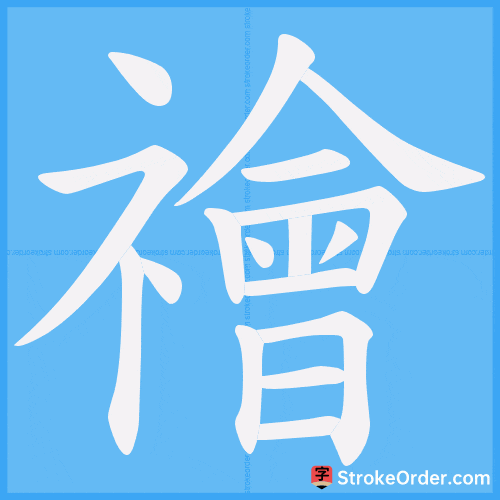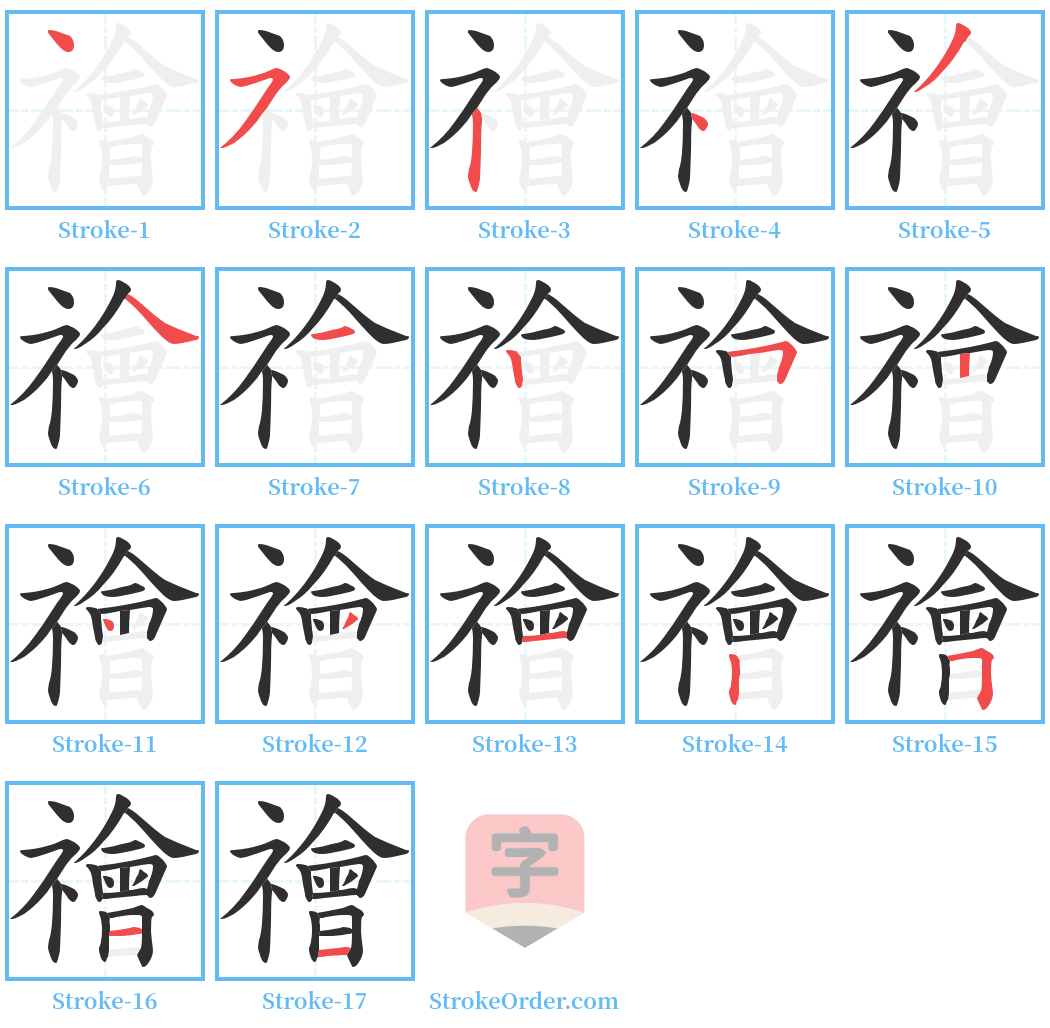禬 Stroke Order
Animated Stroke Order of 禬

Stroke Order Diagrams for 禬

Information of 禬
Pinyin
guì
Radical
礻
Strokes
17 strokes
Usage
★★
Definition
禬 [guì]
1. Ancient ritual conducted to eliminate disasters and diseases.
古代为消灾除病而举行的祭祀。
2. In ancient times, feudal lords gathered resources to assist allied states.
古代诸侯会聚财物接济盟国。
3. Resources provided by feudal lords to assist allied states.
古代诸侯接济盟国的财物。
4. Ancient clothing term referring to the point where a collar crosses or intersects; in a broader sense, it refers to any juncture or knot in clothing.
古代衣领交叉之处。亦泛指衣服上会合交结之处。
引:
1. "Shuowen": 禬 refers to where a belt is tied. Commentary states: "In the 17th year of Duke Zhao, Zuo Zhuan: 'Uncle Xiang said: Clothes have junctures, belts have knots.' - Du's commentary: 'Juncture refers to the collar; knot refers to the belt.'"
《说文》:禬,带所结也。段注:“昭公十七年左传:‘叔向曰:衣有禬,带有结。’杜注:“禬,领会;结,带结也。”
2. "Zuo Zhuan, Duke Zhao, 11th year": "Clothes have junctures, belts have knots; the words of the court must be understood at the level of public acknowledgement, thus ensuring order; it is important to not overlook the appearance of knots and junctures, thus reflecting one's demeanor."
《左传·昭公十一年》:衣有禬,带有结,会朝之言,必闻于表著之位,所以昭事序也;视不过结禬之中,所以道容貌也。
例:
For example: 禬袺 (metaphor for leadership and command); 禬结 (knot in a belt).
又如:禬袺(比喻领导统率);禬结(带结)